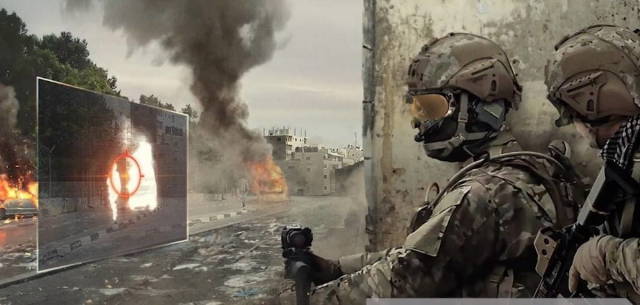The US army is actively working to overcome the shortcomings identified in the equipment and training of front-line units, or "close combat" (CCW). The "soldier Lethality Cross-Functional Team" created for this purpose) Army Futures Commandis working on three projects. The project of an integrated augmented reality system was considered in the first part . This article will focus on the other two.
The US army is testing a new generation of small arms
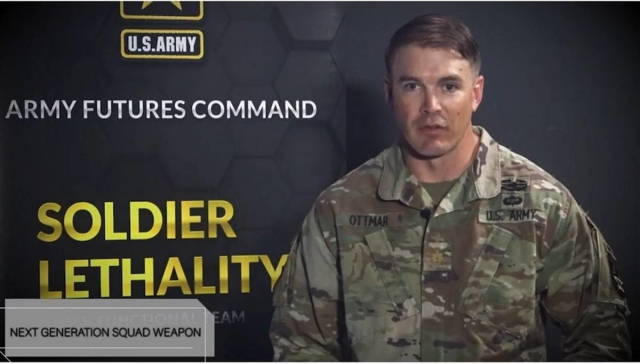
Major Whitt OTTMAR
As part of the soldier lethality group, the next Generation Squad Weapon ( NGSW) project is led by major Wyatt OTTMAR. The premise of the project, which is intended to replace the M4A1 assault rifle and M249 light machine gun in CCW units, was the observation that likely military opponents of the US army, who have equal value in the field of firearms, develop additional capabilities that in some cases can lead to their superiority.
According to major W. Ottmar, a study of the configuration of small arms ammunition conducted by US army specialists in 2017 led to the development of a 6.8 mm cartridge, around which a new small arms system will be built. A prospective cartridge should provide higher penetration and speed, smaller dimensions and weight,and smaller shot signatures than previously used 5.56×45 mm ammunition.
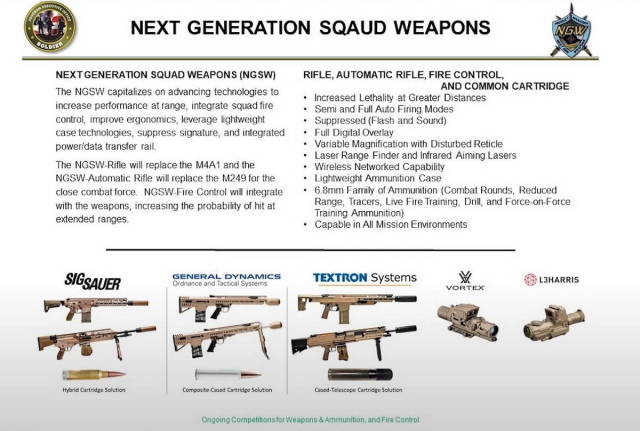
The next generation of squad weapons
Interested companies joined the development process. Currently, three groups of applicants are participating in the NGSW project: SIG Sauer, General Dynamics (with Beretta Defense Technologies and True Velocity) and Textron (with Olin Winchester). All three applicants submitted an NGSW rifle, an NGSW automatic rifle and related ammunition with a 6.8 mm bullet. At the same time, SIG Sauer uses hybrid ammunition made of steel and brass, General Dynamics uses a cartridge with a polymer sleeve, and Textron uses a telescopic sleeve technology. The latter has become known under the project "Technology of small arms and light weapons" (Lightweight Small Arms Technology, LSAT).
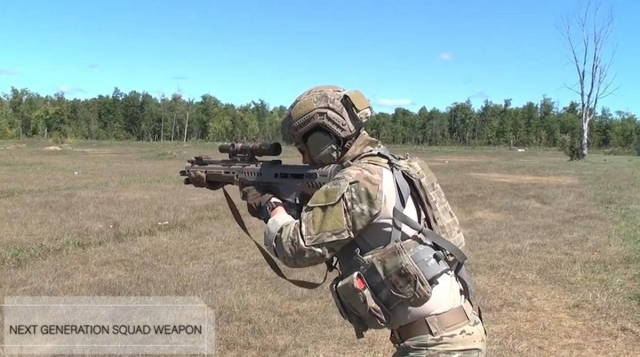
Testing a new generation of weapons
Regardless of the NGSW weapons and ammunition, the project for a new optical sight for the fire control system (Feuerleitvisier Fire Control System) continues. It involves L3/Harris (in conjunction with Leupold & Stevens) and Vortex Optics. The video showed episodes in which soldiers made tactical movements with various samples of weapons being tested and hit targets. The prototype testing stages are planned for 2020-21. Since the project is on time and within budget, its head, major W. Ottmar, is confident that the first NGSW systems will be available in the second half of 2022.
Binoculars with enhanced night vision glasses
The most advanced project managed by the soldier's lethality group isthe enhanced Night Vision Goggle-Binocular (ENVG-B). ENVG-B is a combination of binocular glasses that combine powerful 18 mm third-generation night vision devices (with white phosphor) with a separate thermal imaging channel. There are a total of 10,262 ENVG-B registered in the armed forces, with several hundred SUCH systems already in use. The US army recently commissioned manufacturers L3Harris and Elbit Systems to supply additional systems.
The residual light amplifiers have a minimum power of 2300 FOM and provide a vision range of up to 300 m. The use of white phosphor compared to the previously common green phosphor gives clearer contours and, therefore, better recognition capabilities. The picture also seems calmer and, thus, prevents fatigue of the visual organs of military personnel.
The ENVG-B binoculars provide greater depth of perception. The thermal imaging sensor allows you to quickly detect hostile heat signatures at night, as well as in daylight through smoke, fog, and other darkening conditions on the battlefield. The system can be wirelessly combined with thermal imaging sights mounted on weapons, and the target image created by them is transmitted directly to the ENVG-B ocular display, that is, in the user's field of view.
The augmented reality feature allows you to display "points of interest" (POI) and other mission-critical information: location coordinates, direction of movement, text, and a spatial representation of the position of friendly forces. They are displayed as an AR (Augmented Reality) symbol above the actual position and may contain explanatory information, such as the classification "ally", "hostile", "unknown"or " neutral". The AR symbols also show the distance and direction to the POI. Data is displayed outsidethe active field of view (FOV) and does not interfere with the soldier's actual view.
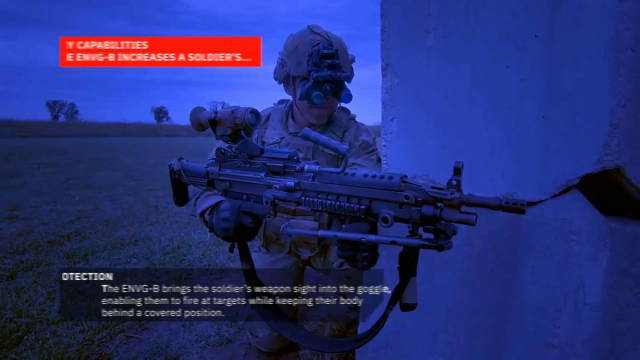
Firing from a corner
Using smart awareness kits based on the Android operating system (Android Team Awareness Kits, ATAK) and radio, this POI information can be transmitted directly to other Department personnel and higher command levels, if necessary. Images recorded by drones can also be projected directly in front of the ENVG-b user's eyes. In particular, L3Harris demonstrated interaction with the FLIR Black Hornet nano-drone at the AUSA 2020 exhibition.
In addition, augmented reality (AR) andhead-up display ( HUD), included in the system, provide wireless projection of the crosshairs of the weapon optics in the soldier's field of view. This allows you to fire from a corner without being exposed to the enemy. In addition, the built-in HUD provides additional critical information, such as location coordinates and direction of movement, text, and the spatial location of your forces. Data is displayed outside the active field of view and does not clutter the field of view.
By materials soldat-und-technik.de
